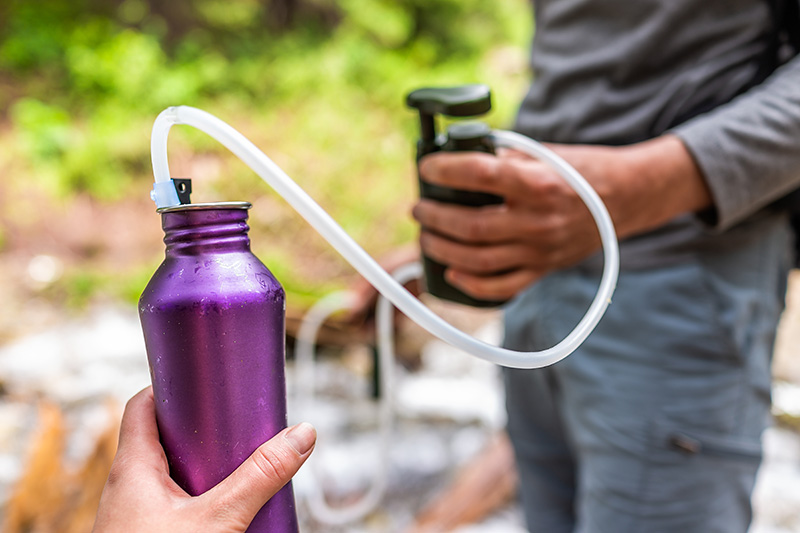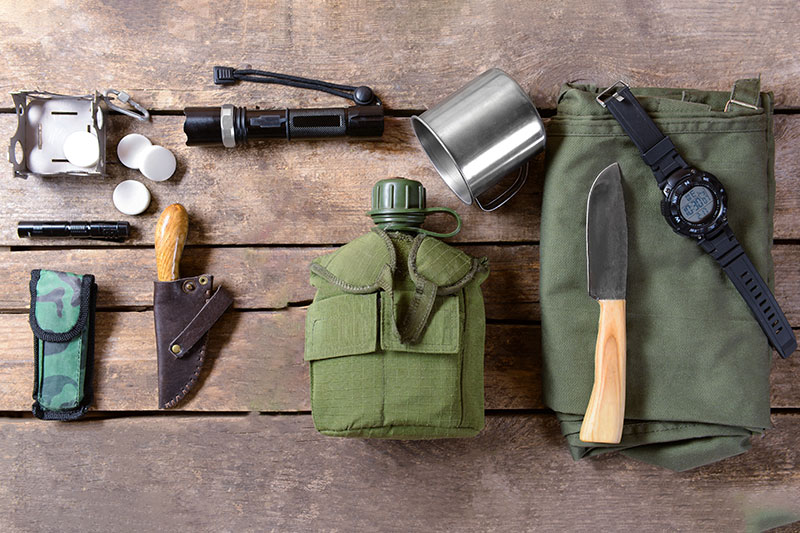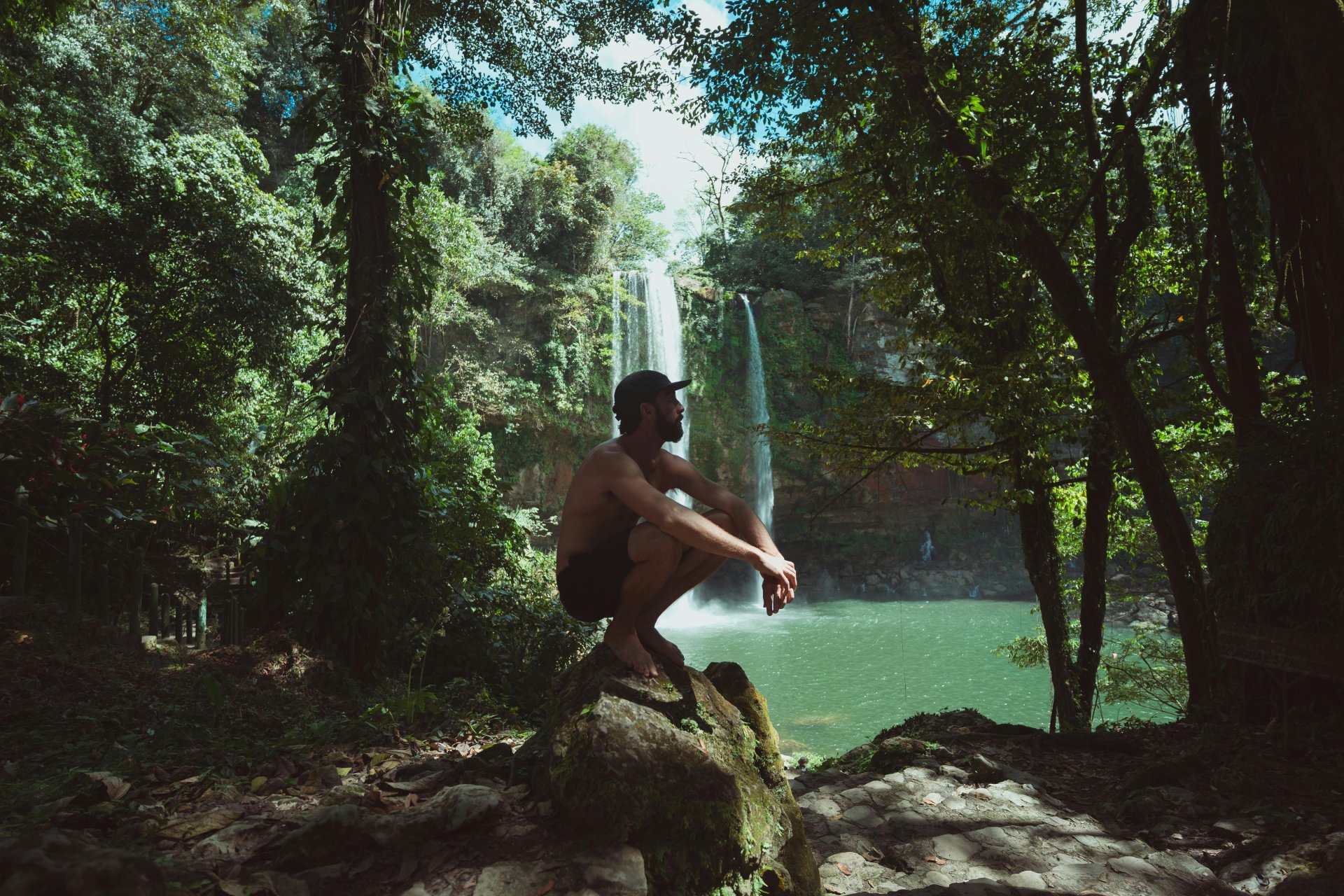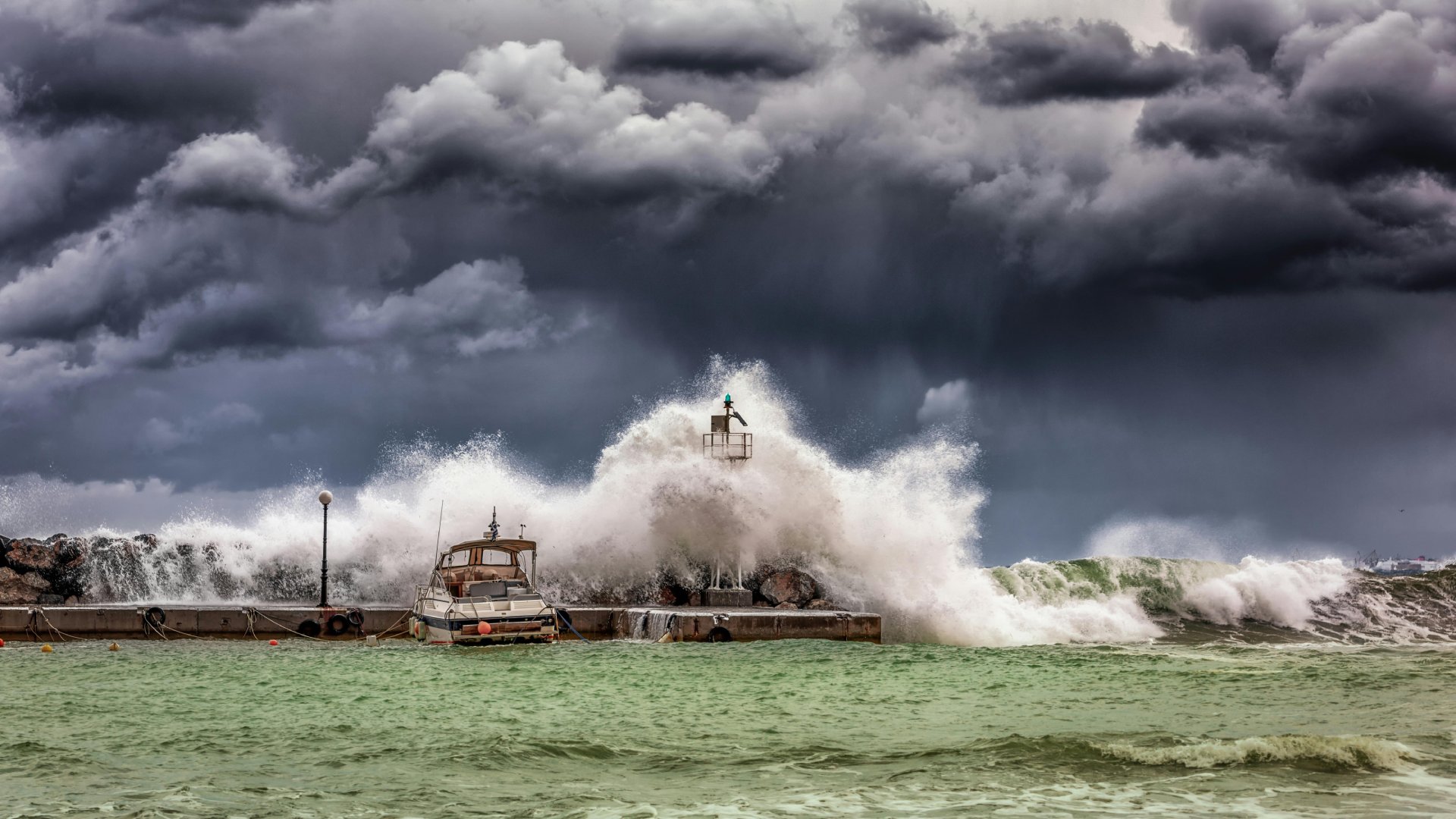An unexpected emergency, such as a natural disaster or civil unrest, during your trip could mean you need a survival kit. Global Rescue travel experts break down the gear you might need in various situations.
What safety items do you need to have on hand while traveling? The components may differ — depending on the destination and the activity and the person — but Global Rescue’s Ultimate World Travel Safety Kit provides an A-to-Z list of items you can use as a foundation. For example, select the items you need for a fishing trip (communications device, first aid kit, knife, rain gear) or the essentials for a camping trip (navigation tools, head lamp, parachute cord).
But it’s not the only safety kit travelers should consider.
An unexpected emergency, such as a natural disaster or civil unrest, during your trip could mean you need a survival kit with “items to increase your likelihood of survival if you find yourself in a life-or-death situation,” said Jeff Weinstein, operations supervisor at Global Rescue.
Residents living in an area with frequent weather risks, like tsunamis, natural disasters or volcano eruptions, may have a go bag stashed in their closet.
A go bag is bag full of things you’ll want with you in an emergency when “you have to drop everything and make a run for it,” said Harding Bush, former Navy SEAL and security operations manager at Global Rescue.
What Do You Need in a Survival Kit?
A survival kit covers six necessary elements: food and water, communications, navigation, first aid, fire and shelter. When Mother Nature is at her worst, you will still be able to eat, treat an injury, signal for help, stay warm and protected from the elements.
“There is a rule of threes for survival: three minutes without air, three hours without shelter, three days without water and three weeks without food,” said Dave Keaveny, medical operations specialist at Global Rescue and an advanced wilderness EMT.
“A survival kit is intended to meet more primitive needs, such as fire, water and shelter,” said Adam Bardwell, medical operations supervisor at Global Rescue. “You should pack items that are durable, long lasting and versatile. For example, paracord can be used to secure a tarp to a tree for shelter, gutted and used as a fishing line, woven into a net — the list is endless. It is not about how long a kit should last, but how long you can survive on the kit.”

Survival kit items are typically designed to do one or several things in the wilderness. A space blanket could be used for warmth, but the reflective side could also be used as a signaling device. A Leatherman includes all the tools you might need: needle nose pliers, regular pliers, hand wire cutters, a combo knife, a bottle opener, a large screwdriver and a locking knife blade. There are even outdoor knives with a built-in LED flashlight, magnesium fire starter, window breaker and seatbelt cutter.
“Items with more than one purpose or fall into multiple categories of survival are more practical, and save weight and room,” Bush said. “A multi-blade folding knife falls into nearly all the categories — the saw can be used to cut branches for a temporary shelter or fire for signaling or to prepare food, and the tweezers can be used for first aid.”
Items should be packed in compact, lightweight carriers, preferably waterproof or water resistant.
Carlene Merola, senior specialist in medical operations at Global Rescue, recommends creating a survival kit to meet your travel needs. “Items can be adjusted to extremely hot or cold environments. If you are hiking or paragliding, bring gear if there is a possible need to shelter for a few days,” she said.
Update your kits frequently. You don’t want to find out that your lighter leaked butane as the temperature drops.
“Do not underestimate the potential for a survival situation. If you are traveling to a remote area, you must be prepared for an injury, getting lost, or having your time in the bush unexpectedly extended. Proper planning for these scenarios can make the difference between life and death,” Bardwell said.
Ready to build your survival kit based on your destination, activity and season? Here are 22 items our travel and safety experts recommend.
Air Filtration Mask
We’re already used to packing a face mask as protection from COVID. But cloth masks are only designed to keep particulates in, not filter particles from the outside. If you’re traveling to an area prone to wildfires or volcano eruptions, you might want to tuck a N95 mask in your bag. The entire mask is a respirator and, if worn correctly, will filter out the small respirable particles found in wildfire smoke.
Aluminum Cup
Need to melt snow into water? Need to boil water? An aluminum cup will come in handy. Some canteen kits come with a heavy gauge aluminum cup while others are designed to fit over a 1-liter water bottle. A stainless steel water bottle is also an easy way to boil water in a hurry, right in the water bottle.
“A fire-safe pot is durable, multiuse, and can be used to purify water, cook, and collect water,” Bardwell said.
Bivy Sack
“A Bivy sack is a perfect, lightweight emergency shelter for when you find yourself spending an unexpected night under the stars,” Weinstein said.
Communication Device(s)
Most everyone has a cell phone. If you are traveling overseas, make sure you have a local SIM card, a cable and adapter and a battery bank.
Going remote? Consider a two-way satellite communication device, like a Bivy Stick or a Zoleo device. They feature SOS buttons that directly link to the appropriate emergency resources, including your travel protection provider.
Duct Tape
Duct tape, also known as a survivalist’s best friend, can be used to stabilize a limb, patch a leaky tent, keep food bags closed, or twist into rope or loops to hang items from your backpack. Experts recommend bringing about 20 feet and wrapping it around your water bottle to minimize its size.
Emergency Blanket
Wool is hands down everyone’s favorite material to stay warm even if you get wet. Space blankets made of lightweight Mylar might be easier to pack and can double as a reflective device. No matter what you bring, the key question: will it hold in body heat?
First Aid Kit
A stripped down first aid kit would include the bare essentials: a Sam splint, some Ace bandages and gauze pads of various sizes. Merola and Weinstein also recommend a tourniquet, a compression device that could be a lifesaver when you need to stop the flow of blood.

Fire Starter
Whether you need to stay warm or to cook food, you will need to be able to easily light a fire.
“Fire is a top priority in a survival situation,” Bardwell said.
There are many ways to start a fire. “Weatherproof matches, lighter, tinder, magnifying glass, flint and steel, magnesium bar or a durable reusable fire starter,” said Garrett Dejong, senior medical specialist at Global Rescue.
Only pack the fire starter if you know how it works and you’ve practiced with it at home. “Be familiar with all your equipment and practice using it before leaving for the backcountry,” Bush said.
Gloves
Consider your destination, and choose the most appropriate type of glove. Earthquake prone environment? Work gloves in case you have to move debris. Cold weather? Waterproof mittens will keep your fingers warmer. Hiking or trekking? Gloves should combine warmth, waterproofing, dexterity, durability and usability. Having an extra pair is always a good idea.
Hygiene Items
If space is limited, stash away some biodegradable face and body wipes. It will go a long way to help you keep your sanity if rescue is a day or so away. Second priority: a toothbrush and a small tube of toothpaste.
High-calorie Food
vDon’t just pack any food in your survival kit. “Pack high-calorie food,” Merola said. You need a blend of protein, fat and carbs.
Energy bars are a good choice. Look for options with high protein, like an RX Bar with 12 grams of protein. Look for real ingredients, like LARABARs with dates, fruit and nuts. Choose an organic bar (a regulated label) over a natural bar (less stringent standards).
Bouillon cubes — either veggie or meat stock — have a two-year shelf life. You’ll be able to stay hydrated, have a small amount of nourishment, and the warmth of broth is a morale booster.
Other ideas: trail mix, jerky, freeze dried meals and dry goods, like dried beans or rice.
Light
Flashlights are usually the go-to light source when you are out after dark. Consider a hand-crank version if you don’t want to lug around extra batteries. Even better: a headlamp, which leaves your hands free. Chemical light sticks, found at any dollar store, are small and easy to pack.
Navigation Tools
We said it in our Ultimate Travel Safety Kit, but it bears repeating: No matter how well you know the area or terrain, mistakes can be made. Never leave home without navigation tools, including a GPS unit with cellular or satellite coverage, a map and a compass.
“It’s crucial to understand your area and the cardinal direction to move to in the event of an emergency. GPS and smartphone navigation apps are a good idea, but batteries die and machines break,” Bush said. “Know how to use a map and compass. Review the map and your location before setting out. Have your map properly folded, so your location is easily referenced, and store it in a waterproof case. There are no substitutions for a printed map.”
[Related Reading: Ultimate Travel Safety Kit]
Over-The-Counter Medications
What over-the-counter medications do you take regularly? Add a small supply of pain relievers, antacids or decongestants to your first aid kit.
Paracord
Paracord (also known as 550 cord) is a must-have in Bardwell’s survival kit. “It is extremely versatile, lightweight and cheap,” he said. And the uses are endless: You can create a bow drill for fire, snares for trapping, weave a gill net, hang a bear bag, or take it apart (gut it) for the smaller strings inside the outer covering to use as fishing line.” Add 50 feet to your survival kit.
Signaling Devices
You’ve tried cell, satellite and radio communication. What’s left? A mirror or a space blanket with a foil side to reflect light (three flashes is the international distress signal) and attract the attention of another person, vehicle or airplane. The loudest whistle you can find will alert search and rescue to your location.
Boats are required by law to be equipped with visual distress signals (red flares indicate an emergency), road flares are a must-pack for RV travelers and road trippers, and backcountry explorers should bring a handheld flare (which can also be used to start a fire).
“Flares with enough elevation to get above terrain would be impractical to carry due to weight. They could also start fires if not used correctly,” Bush said. “A whistle blast in groups of three or six, signal mirror flash, signal fire (group of three) or ground-to-air signals are more practical distress signals for ground terrain.”
Tarp
“A tarp makes a great improvised shelter,” Bardwell said. “They are lightweight, durable, waterproof, easy and quick to set up.”
Travel Protection Membership
Help is just a phone call away if you have a travel protection services membership. With no distance requirement, our rescue services are available whether you’re close to home or on the other side of the world. We get you from the point of illness or injury to the nearest medical facility.
Utensils
You’ve got the multi-tool, but do you have a mealtime multi-tool? An eating utensil — used for cooking, eating or other useful purposes — should include a knife, fork, spoon, can opener or bottle opener. Many of them fold and unfold, and some come in their own storage pouch.
Water
The American Red Cross recommends one gallon per person, per day. No one could carry that much with them, so you’ll want to have water treatment supplies.
Water Treatment Supplies
Don’t just drink from any nearby water source — be sure to filter and purify the water first.
“Water purification can occur through the use of chemicals (such as chlorine and iodine), by boiling water, or by utilizing UV rays,” Weinstein said.

Zip Bags
Zip bags are a great way to keep items waterproof. Make sure the brand has a sturdy zipper and thicker plastic. GearJunkie lists all the uses for this versatile survival kit item: store toilet paper, keep electronics dry, organize snacks, keep fire starters dry/organized, pack out trash and catch rainwater.
Survival Essentials Are Not All You Need
Bush stresses there is no such thing as a comprehensive survival kit. “It takes a lot more than a small assortment of bouillon cubes, fishing hooks, a tiny compass and waterproof matches to survive in the wilderness after you find yourself in over your head, beyond your capabilities and perhaps even in a life-threatening situation,” Bush said.
Surviving in the wilderness longer than anticipated requires nearly all the items you used throughout the trip. This includes your cellphone, map and compass, GPS, headlamp, water bottle and aluminum cup, food, first-aid kit, extra outerwear, and your sleeping bag or a space blanket, depending on the weather. If you have been out longer or are perhaps injured, you’ll need to extend the life of those items — having extra batteries or charging capability for your electronics and an extra lighter to start a signal or warming fire.
“If your trip into the wilderness is well planned, balanced with your ability and you have the right equipment, what may usually be thought of as a survival situation merely becomes a short delay or an inconvenience,” Bush said.









